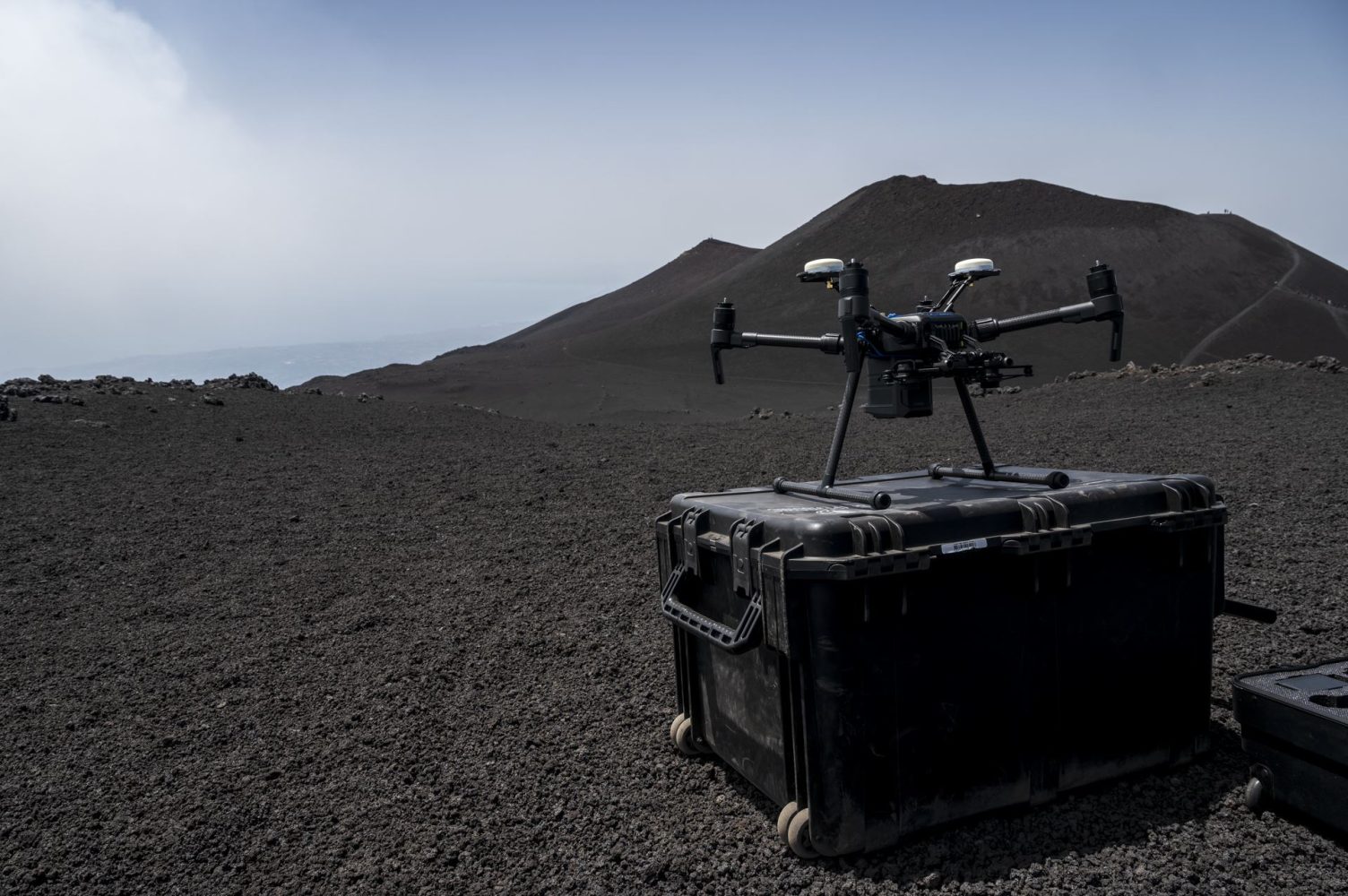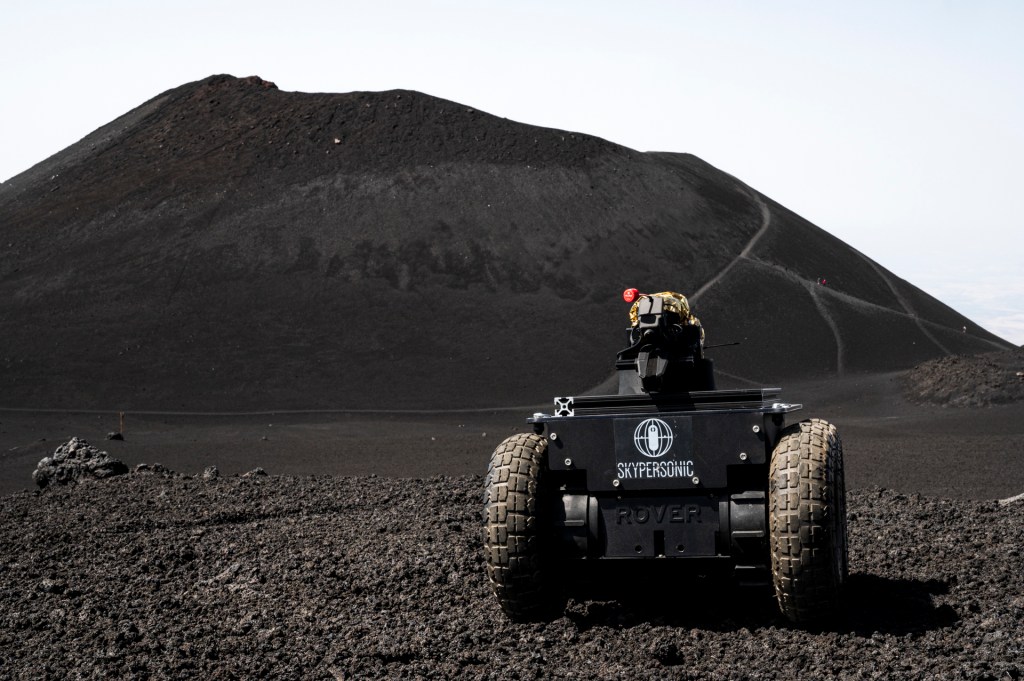
Detroit-based drone inspection company Skypersonic has further prepared for its role in a simulated NASA Mars mission by testing its hallmark remote UAV and rover piloting system during trials on the Martian-esque terrain of Italy’s volcanic Mt. Etna.
Skypersonic performed the 15-day series of trials as part of the five-year partnership it struck last year with NASA to provide drone and rover tech for the agency’s simulated Mars mission. During the trials carried out in July, the company says it demonstrated the remote control viability of its software and hardware, after pilots based in Houston, TX put the flagship Skycopter UAV through the paces above Mt. Etna nearly half a world away.
Read: NASA developing drones to monitor potential volcano eruptions
Among the tasks carried out on the surfaces of the active volcano was collection of rock samples by a Skypersonic terrestrial rover – an essential capability for any craft involved in Martian exploration. Equally critical was the effectiveness of remote drone piloting from a very great distance, which is another central challenge in Skypersonic’s contribution to NASA’s Mars project.
“This was a grueling test that we passed with flying colors,” said Giuseppe Santangelo, CEO of the Red Cat Holdings Skypersonic affiliate. “We look forward to the ultimate test ––on Earth, at least – when our technology will be used during NASA’s upcoming yearlong simulated Mars mission.”
Read: Red Cat Holdings confirms acquisition of Skypersonic
Skypersonics says its Skycopter and rover can be piloted at and from virtually any locations, no matter how far apart they are. The company previously tested that ability during industrial drone inspection trials, notably one in June of a plant in its European base, Turin, controlled by technicians in Florida.

That capability relies on Skypersonic’s Long Range Real-Time Remote Piloting and Skyloc systems, which – as will be the case in NASA’s simulated mission (not to mention the real Mars) – are designed to assure the control and tracking of drones even in places where GPS isn’t available.
Santangelo says the successful trials on Mt. Etna provide further momentum to build on as Skypersonic readies for the ultimate, Earth-based challenge of enabling full and effective remote flight in NASA’s nearing Mars simulation.
“During the simulated Mars mission, four crew members living and working in a 1,700-square-foot module on Earth, called Mars Dune Alpha, will carry out a series of missions – including remotely guided exploration and collection of specimens from rugged terrain elsewhere on Earth, up to thousands of miles away,” Santangelo says. “We are confident of also passing this test.”
If it can, the Red Planet will be waiting.
FTC: We use income earning auto affiliate links. More.



Comments